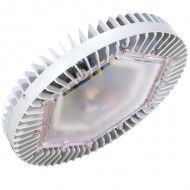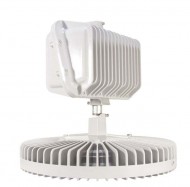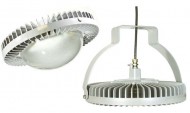![IMG_3993[1]](http://www.warehousenews.co.uk/wp-content/uploads/2012/12/IMG_39931-190x253.jpg) Ocip Energy is a UK-based company offering a wide range of LED lighting solutions. By working in partnership with leading UK, European and US manufacturers including Dialight, Steinel, OGC, ExLed and Projection Lighting, they offer a comprehensive range of LED products to a large variety of clients from the commercial, industrial and public sectors. Complimentary professional services include feasibility studies, design consultations, energy efficiency consultancy and installation advice.
Ocip Energy is a UK-based company offering a wide range of LED lighting solutions. By working in partnership with leading UK, European and US manufacturers including Dialight, Steinel, OGC, ExLed and Projection Lighting, they offer a comprehensive range of LED products to a large variety of clients from the commercial, industrial and public sectors. Complimentary professional services include feasibility studies, design consultations, energy efficiency consultancy and installation advice.
Ocip Energy take time to understand their clients’ challenges and needs and determine the right products for the individual case. Their expertise lies in deploying the right lights in the right location and working with customers to help meet their energy efficiency and energy saving targets. Their aim throughout is to give practical and affordable advice, linked to the need to reduce energy consumption and offer a lighter carbon footprint.
Ocip Energy’s portfolio of high efficiency LED lighting products is ideal for industrial, commercial, ATEX hazardous area and obstruction lighting. Their products range from high bay lights and floodlights, streetlights and office lights and are suitable for any venue with a high lighting usage profile, including offices, retail, warehouses and transport hubs. Showing their versatility, Ocip recently provided the NEC Birmingham with the latest LED High Bay lights to test and they ended up filming the 2012 Top Gear Live! advertisement under them.
Aidan Brown, Managing Director of Ocip Energy, spoke to Warehouse & Logistics News.
Warehouse & Logistics News – As Managing Director, Aidan, what does your role at Ocip Energy involve day to day?
My principal role is sales and market development. LED product sales growth has increased dramatically in our target sectors, namely industrial and commercial. Our product range is ideally suited to these environments, so there is a lot of development work to be done.
WLN – Do you get personally involved in devising and implementing LED solutions for clients?
Yes, I am actively involved in the surveying, designing and implementing our clients’ schemes. You will regularly find me on site in jeans with PPE equipment. Clients like to see the management are hands-on. There is a service to provide, and without going on site, it is difficult to offer the personal perspective.
 WLN – When was Ocip Energy set up, and who owns it?
WLN – When was Ocip Energy set up, and who owns it?
Ocip Energy Ltd was set up in March 2009, and originally covered both alternative power generation and LED lighting. We worked on the principle of renewable energy generation and energy conservation. Having previously worked in the mobile infrastructure business for many years, we saw a market opportunity to develop the wind turbine market using our existing skill set. However, my main interest has always been the LED lighting side of the business, and it is this that we have completely focused on since 2011.
WLN – What were you doing before this?
I was in the telecoms business for about 15 years, working for the major global equipment vendors in Africa, Europe and the Far East. I set up and ran my own telecoms business for about five of those years, specialising in corporate in-building contracts for a global mobile phone business in the UK.
WLN – Whereabouts are you based? How many staff do you have?
We are based out of Cheltenham in Gloucestershire, with an office near Grantham in Lincolnshire from which our sales manager focuses on the Eastern and Central regions. There are four employees in the business, and two consultants in the North. We work closely with national lighting companies such as Interior Control, whom we supported at the recent Lux Live Show at Earls Court.
WLN – Can you talk us through the brands you represent?
As a business we have taken a conscious decision to focus on British manufacturers, as well as some US and European LED producers. There are a number of reasons for this focus, but it centres around supply chain, LED reliability, design quality and warranties. If I can sleep easy at night, then I know our clients also have peace of mind. LED lighting products are evolving on a daily basis, and we take time to research and improve our product offering by engaging with new suppliers and manufacturers. I strongly believe that the UK has some of the best LED lighting manufacturers in the world. So who do we represent? We are agents for Dialight Europe, and I have a personal interest in Southern England and South Wales. We’ve represented Dialight for four years now, and their lights tick all the boxes for our industrial and warehousing customers. We add value by providing total LED-based lighting solutions, offering free site surveys and consultancy on all aspects of LED lighting.
 WLN – Can you summarise the products in your product range?
WLN – Can you summarise the products in your product range?
In the first instance, we only supply LED lighting products. Of the various energy saving technologies, we feel that LED is the market leader. To that end, we supply fittings for the commercial and industrial market including High Bay, Low Bay, Floodlighting, Streetlighting, car park lighting, office lighting and hazardous area lighting. In the logistics sector, we traditionally replace fluorescent, HPS or Metal Halide lighting in warehouses and distribution centres.
WLN – What kind of energy efficiencies and energy savings can your LED solutions offer?
Ultimately, it depends which technology we are replacing, and also the nature of the fittings. For instance, our solutions offer up to 70% saving on energy costs against existing HPS fittings in a warehouse or coldstore, giving a rapid payback and lower carbon emissions. By way of example, we might replace a 400W SON High Bay with our 150W LED product. Furthermore, good quality LED lighting requires virtually no maintenance and has a longer life, with many products having a useful life of up to 100,000 hours compared to traditional lighting systems.
WLN – What kind of warranties do your solutions have?
Depending on the product, we offer a full warranty on all LED lighting from 36 months up to 60 months.
WLN – What standards are your products made to?
Ultimately, it depends on the environment in which the products are going to be placed. All our products are fit for their intended use and fully conform to European Standards and RoHS (Restriction of Hazardous Substances Directive) regulations, and are approved for lighting purposes from aviation to hazardous areas. The hazardous area and aviation lighting is also the most heavily regulated.
WLN – How has business been for you in 2012?
The last quarter has been our busiest period in the last four years, with more people getting into LED in a big way.
 WLN – Why do you think that is?
WLN – Why do you think that is?
There are many potential reasons, and the autumn is often referred to as the “selling season”. However, the price of electricity is going up and the days are getting darker, so lighting is very much front of mind. Talking to people in our industry, I feel we may have turned the corner from early adopters of LED lighting to mainstream acceptance. More people are looking now at LED products as their first port of call, and see it as a viable first option.
WLN – What kind of companies are you targeting?
The people coming to us recently are well known large distribution companies, bottling plants, paper mills and cold stores, all wanting solutions for use in their warehouses or production facilities. UK industry as a whole is looking at LED lighting with fresh interest, particularly companies running 24/7 operations.
WLN – As consumers we’ve had low wattage light bulbs in our homes for some time. How do your industrial LED lighting solutions compare?
Domestic and industrial LEDs have the same basic technological requirements but obviously at a completely different scale. As a business we don’t get involved with the domestic market, which in recent years has been dominated with compact fluorescent products.
WLN – Is the LED light market also full of Far Eastern product?
Yes, there are a lot of LED products from the Far East, many of which are well made, but the problem is there are very large numbers that are not. Understanding how LEDs work is critical to understanding what makes a good fitting. The best luminaires are engineered products, with the power supplies, heat sinks and optics all carefully designed by lighting specialists. The poor performers are usually those that have been “assembled” rather than engineered. The problem is that most people can’t tell the difference between a good and a bad product, and the reputation of the technology can be tarnished.
 WLN – What’s stopping more people adopting LED for industrial lighting?
WLN – What’s stopping more people adopting LED for industrial lighting?
The biggest barrier in this sector is often the perception of cost. Whilst LEDs tend to come at a perceived premium compared to traditional forms of lighting, but when you look at the total cost of ownership, factoring in life of product, energy savings and virtually zero maintenance, LEDs become a compelling proposition. Reliability has often been cited as a problem, but again, companies like Ocip Energy are able to steer clients to the most appropriate LED fittings and avoid potentially expensive mistakes.
WLN – Do you have any customer case studies to show your LED lighting solutions in action?
Yes we do. As you can see on the other page, there are a variety of examples such as the Aberdeen Coldstore example, March Foods, ABC Racking and Fletcher Moorland.
WLN – Can you tell us in more detail about the benefits of LED lighting?
There are multiple advantages to LED lighting, with the big draw being energy saving. Depending on the individual products used and the particular location, LED can save up to 70% of electricity compared to many traditional forms of lighting. We have mentioned the very low maintenance, but other advantages include improved light quality – gone are the ghastly orange lights of yesteryear and next to no heat is produced, which offers huge savings in cold stores. LEDs operate over a wide range of voltages and a wide range of temperatures. Many of our High Bays can operate between -40C and +65C, making them suitable from Siberia to Sudan. Notwithstanding that, the cooler the temperature the more efficiently the LED works. LED lighting also has no heavy metals or disposal issues, more often associated with fluorescent and induction lighting forms.
WLN – What quality of light can LED achieve in a warehouse situation?
With LED, warehouse light can be clearer for reading bar codes and racking labels and for forklift drivers. LEDs can be found in everything from light dials on a forklift, vehicle lights, traffic signals, up to large High Bay lights. They are now everywhere in a warehouse environment. LED’s advantage can also be seen with the fact that the light is instantly on, there is no ‘hot re-strike’ so you can run controls off the LEDs, such as dimming and occupancy sensors.
WLN – How long do LED lights last for?
Like anything it depends on the product. The best LEDs can last significantly longer than conventional incandescent lights. Our market leading LED High Bays will reach L70 at around 100,000 hours, meaning that they have lost 30% of their illuminance after this operating time. For a company working 24/7/365 this equates to 11.4 years of continuous usage.
WLN – Sorry, I can’t resist this question – how many people does it take to change an LED lightbulb? Are they easy to replace?
Yes, they are incredibly easy to replace. The biggest issue with replacement is what to do with the old fitting, such as fluorescents, as these need to be disposed of in an ethical manner. The Environment Agency has determined that Fluorescent Tubes are now classified as Hazardous Waste in England and Wales, and as Special Waste by the Scottish Environmental Protection Agency (SEPA).
WLN – How does LEDs’ power consumption compare with sodium light?
A standard high bay 400W rated SON High Bay can draw up to 500W: LED lights can deliver a better quality light at a net 150W. In some cases and with an optimised design, it can be possible to reduce the number of fittings using LEDs, offering potential capital as well as operating savings.
WLN – How long does it take to see a payback with LED?
Most warehouse sites where we’ve installed LED lighting, show a pay back in two years to two and a half years. It is a function of a range of factors including usage, price of energy being paid, price of the LED lights and what lights are being replaced.
WLN – How big is the potential market for LED light?
In Asia, North America and Europe, LED’s current share of the general-lighting market was around 7% in 2011, but in each case this is expected to grow to around 70% by 2020. LED’s penetration is still low.
WLN – What specific services do you offer to customers with your LED solutions?
Ocip Energy Ltd has grown at the same time as the market for white light LEDs has evolved, and we have a very good understanding of which products would be suitable for an individual customer or environment. We provide free of charge lighting surveys and consultations, guidance in assessing, designing and installing an energy efficient lighting scheme. By utilising either our in-house capability or working with the manufacturers like Dialight and our established partners such as I.C Lighting we can help project manage each stage of the process. We strongly encourage clients to take up our free lighting trials to “test before they buy”. Often our warehouse clients ask us to look at the whole site, including offices, canteens, corridors and floodlighting. We have a large range of products that we can offer these clients including some of the best LED 600 x 600 panel lights on the market. The Dialight High Bay is also very versatile and can be mounted as a traditional High Bay or even as a 150W floodlight on a swivel bracket. This versatility offers significant savings to a client, who can use the same product for separate applications, plus it is IP66 rated so it is suitable for indoor or outdoor environments.
WLN – You mentioned your major customers earlier. What other contracts have you got in the pipeline?
We’re in the final stages of negotiations for LED deployment in several major non-food retail distribution centres. We are also working extensively in the paper manufacturing and automotive industries.
WLN – What’s your advice to anyone thinking of switching their warehouse lighting to LED?
Anyone thinking of switching has to make a decision based on their anticipated lighting needs. Energy prices will continue to rise, with many expecting year on year increases of around 10% for the foreseeable future. An investment in a product that will reduce energy bills over a 10 to 20 year period is compelling. Our products are mainly designed and manufactured in the UK, supported by warranties from UK companies. In a warehouse environment, lighting can contribute up to 70% of the energy costs, so why wait to reduce your lighting bills?
WLN – What other factors are influencing people to switch to LED?
The bigger companies are looking at making major carbon reductions by 2020, and lighting is one of the easiest areas to make an immediate improvement in terms of energy and emission, and improve the work environment. Some engineers’ bonuses are based on reducing their energy emissions!
WLN – Finally, where do you see Ocip Energy going in 2013? Any plans for new products or services? What about exhibitions? Where do you see Ocip Energy going from here?
We have recently partnered I.C Lighting at Lux Live and will be attending the Maintec 2013 event at the NEC in February, so plans are afoot to reach out to our target markets. We have also started to explore overseas opportunities for 2013, with a particular emphasis on LED lighting for the aviation and mining industries. In terms of where we go from here, we hope to have some very high profile sales in 2013, but at present we are not able to share these details. However, we will be issuing press releases and publishing stories on the website as they are concluded.
Ocip Energy Ltd
Tel: 01242 250633
Aidan Brown can be contacted directly at aidan.brown@ocip.co.uk




Comments are closed.